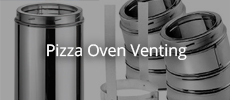Re: John's 42inch Aussie WFO
Good work mate. Well done on the transition. I did a similar thing, and found it painstaking. Good luck with the remaining courses... I started to cut smaller brick pieces until they became almost triangular.
Keep it up... almost there.
Announcement
Collapse
No announcement yet.
John's 42inch Aussie WFO
Collapse
X
-
Re: John's 42inch Aussie WFO
I have completed another 1.5 rows and am now beginning to fight with gravity. What fun!!! lol
The 2 full sized bricks that sit over the arch, I cut these to shape to simulate to half bricks. I thought that by doing this it would help to keep the shape of the rings. They actually came out very good and recommend this to anybody struggling with the arch transition.5 Photos
Leave a comment:
-
Re: John's 42inch Aussie WFO
Hi All
Thank you all for your feedback and advice.
I have not had the opportunity to worked on the oven much due to the festive season.
I did however part use my barbecue area on New Years day. As you would have seen I built a 1.4 meter wide Pitt to the right of the oven to allow charcoal/timber barbecueing and most of all my beloved Lamb Spit cooking.
It all went according to plan ie the cooking of the lamb on the spit (11kg) and the consumption of lots of alcohol!!! but to my horror I had a major structural fault in the brickwork!!
With the extreme heat the back brick wall shifted around 10mm. This runs for about 1 meter from the far right towards the center of the Pitt. I can only assume that the heat generated has caused expantion in the concrete slab and or concrete cooking floor which has expanded and pushed on the back wall. I have now realized that I should have insulated the internal pit with vermiculite base and then lined the Walls with insulation brick to contain the heat within. I think I will part rip down the back wall and start again as I am a little scared that if the wall fails it may fall and land in the neighbours pool!!! again!!
again!!
As they say Not Happy Jan!!!Last edited by John K; 01-06-2010, 06:21 AM.
Leave a comment:
-
Re: John's 42inch Aussie WFO
Cracks happen. We call them expansion joints. Nobody notices them when the fire is in the oven or pizza is cooking. You'll get over the hurt in time.
Leave a comment:
-
Re: John's 42inch Aussie WFO
Hi John,Would I be correct in saying that you layed your chimney bricks on their side giving you a chimney height of 460mm (I think 18inch).
Have your side landing bricks cracked with the sideways load of the arch pushing down from the above weight?.
How does it draw?
you are correct as the chimney is 18 inches tall, My side landing bricks have not budged,moved,cracked, etc at all.... My only misteak was not making the actual throat of the chimney wide enough, Right now it is about 4 inches x 8 inches (100mmx200mm) after the initial start up it draws fine, you can see the front of my chimney is covered with soot,, this only comes from the startup fire after that everything vents thru the chimney.. I may rebuild my opening in the spring, but I also kinda like the rustic sooty look...
Cheers
MarkLast edited by ThisOldGarageNJ; 08-16-2010, 05:52 PM.
Leave a comment:
-
Re: John's 42inch Aussie WFO
Hi John,
sorry for the long delay. been busy with the family enjoying beer and our first pizzas... yum. they look terrible but taste great. much learning to do.
regarding cracks, they open up most when the oven is hot with a raging fire inside... they are tiny, less than 1mm, but enough to see from the outside. They formed along the mortar lines... one vertical crack at the back from above the soldier course to about half way up the dome. the second crack is horizontal along the 2nd course of bricks for about 1/6th of the dome right near the opening. No big deal to me, but I will repair them according to some post I read before. Grind out a V in the mortar, fill it with flue goo, more mortar, then cure it again slowly.
I am disappointed with the cracks, especially since I cured the oven step by step how I was instructed. I held it at 200 degrees for 8 hours, and even longer while the steam was leaving the dome. I eventually reached about 250-300 degrees after 12 hours, but then let it die down overnight. The steam did not return after that. But the cracks did!! Sad. But i'm OK now, i'll just get on with repairing it.
I haven't finished my chimney, but I will build it out of bricks, 8 inch internal diameter (square). A local brick mason told me to line it with a thin trowelling of mortar, then sponge it down. Smoothes out the bricks and joints, makes for a less turbulent chimney. I am not using a separate flue liner, just bricks and mortar. Total of 1 metre tall above the entry, that is about 12-13 courses of bricks. I used firebricks for the first 4 courses, then transferred to standard clay bricks. (by the way, I have dry stacked the bricks just to test the drawing capability without internal mortar). It seems to draw well especially when the fire is going. When I start the fire with kindling, the smoke tends to go everywhere, especially if it's windy. I have another course of bricks at the arch front to install too which will reduce the effect of the wind in the flue entry.
Hope this is of interest to you and will help u decide what to do!
cheers
M
Leave a comment:
-
Re: John's 42inch Aussie WFO
You'll get better draw on start-up if you make some kind of transition between flue and entry. I think it's recommended to flare to twice the area of the flue cross section. You can easily do this with brick, but the flue tile transition works well. Around here flue tile is cheaper than brick.you cut your Terracotta pipes in 2 to form a funnel I assume to increase the drawing of air, is this something I need to do with brick construction as well?
Leave a comment:
-
Re: John's 42inch Aussie WFO
Much appreciated David.Originally posted by dmun View Postan eight inch unit for a 42. In this country, our options for refractory flue tile are limited: the smallest is an eight inch square tile, which has an area bigger than the stainless unit. That's what I used on my 36, and it works fine.
I noticed on your build (wow!! talk about masonry work) that you cut your Terracotta pipes in 2 to form a funnel I assume to increase the drawing of air, is this something I need to do with brick construction as well?
Note my WFO will not be enclosed.
Leave a comment:
-
Re: John's 42inch Aussie WFO
Thanks Mark,
Would I be correct in saying that you layed your chimney bricks on their side giving you a chimney height of 460mm (I think 18inch).
Have your side landing bricks cracked with the sideways load of the arch pushing down from the above weight?.
How does it draw?
cheers
Leave a comment:
-
Re: John's 42inch Aussie WFO
Yes. Your entry side walls should transfer the weight to your support slab.1. I am planning to build the flue with solid dry pressed bricks. Will the weight of the chimney support itself on the external and internal arch bricks?
Stainless chimney systems are done the same day. If you have the money to buy one it moves your project ahead promptly. The classic masonry chimney, with it's flue liner, air space, and masonry surround is complicated and time consuming. There are even people who like the way a duravent or equivalent looks.3. Can anyone suggest a reason why a stainless flue is better than brick construction?
The instructions suggest a six inch chimney unit for a 36 inch oven, and an eight inch unit for a 42. In this country, our options for refractory flue tile are limited: the smallest is an eight inch square tile, which has an area bigger than the stainless unit. That's what I used on my 36, and it works fine.2. I realise that there are multiple threads on chimney design but can anyone recomend one that will assist with airflow and size?
Leave a comment:
-
Re: John's 42inch Aussie WFO
Hi John I can help you with question # 1. I used firebrick, because I had enough left over, I think the pressed brick should be fine as long as they are solids,, I am att a pic for reference..1. I am planning to build the flue with solid dry pressed bricks. Will the weight of the chimney support itself on the external and internal arch bricks? I plan on nocking down the existing landing brickwork and erect a double brick wall rather than single.Last edited by ThisOldGarageNJ; 08-16-2010, 05:53 PM.
Leave a comment:
-
Re: John's 42inch Aussie WFO
Hi all,
I have 3 questions that I hope somebody can assist with.
I do not know anything about chimney construction and would like some guidance on the following
1. I am planning to build the flue with solid dry pressed bricks. Will the weight of the chimney support itself on the external and internal arch bricks? I plan on nocking down the existing landing brickwork and erect a double brick wall rather than single.
2. I realise that there are multiple threads on chimney design but can anyone recomend one that will assist with airflow and size?
3. Can anyone suggest a reason why a stainless flue is better than brick construction?
Much appreciate your help?
Leave a comment:
-
Re: John's 42inch Aussie WFO
Originally posted by MikeyMann View Post
The rest of the oven becomes easier after this. Especially if you have a form.
BTW... I did my first real fire last night after curing with head beads.
I followed exactly what field furnace told me, slowly up to 200 degrees, then hold for 8 hours then slowly up from there. I got a few cracks, very minor, probably 0.5mm, I am considering repairing them with flue goo, but the oven goes so well.
Keep going mate... nearly there.
M
Thanks Michael
I will try to finish the dome free hand rather than use a form, I guess I am a glutton for punishment, I am also beginning to look at chimney sizes/airflow. I think I will make the flue from brick rather than stainless steel, Andrew from field furnace told me that I will get cracks from the shrinking and expanding of the flue.
Will see how I go
Out of curiosity where did you get the minor cracks?
Leave a comment:
-
Re: John's 42inch Aussie WFO
Hey John that looks great. I felt the same with mine, but I decided to turn my attention to structural integrity and not worry about the look. Especially around the arch transition as you're never going to see it. Just as long as it's all locked in place and the weight it evenly distributed it should be OK.
The rest of the oven becomes easier after this. Especially if you have a form.
BTW... I did my first real fire last night after curing with head beads.
I followed exactly what field furnace told me, slowly up to 200 degrees, then hold for 8 hours then slowly up from there. I got a few cracks, very minor, probably 0.5mm, I am considering repairing them with flue goo, but the oven goes so well.
Keep going mate... nearly there.
M
Leave a comment:





Leave a comment: